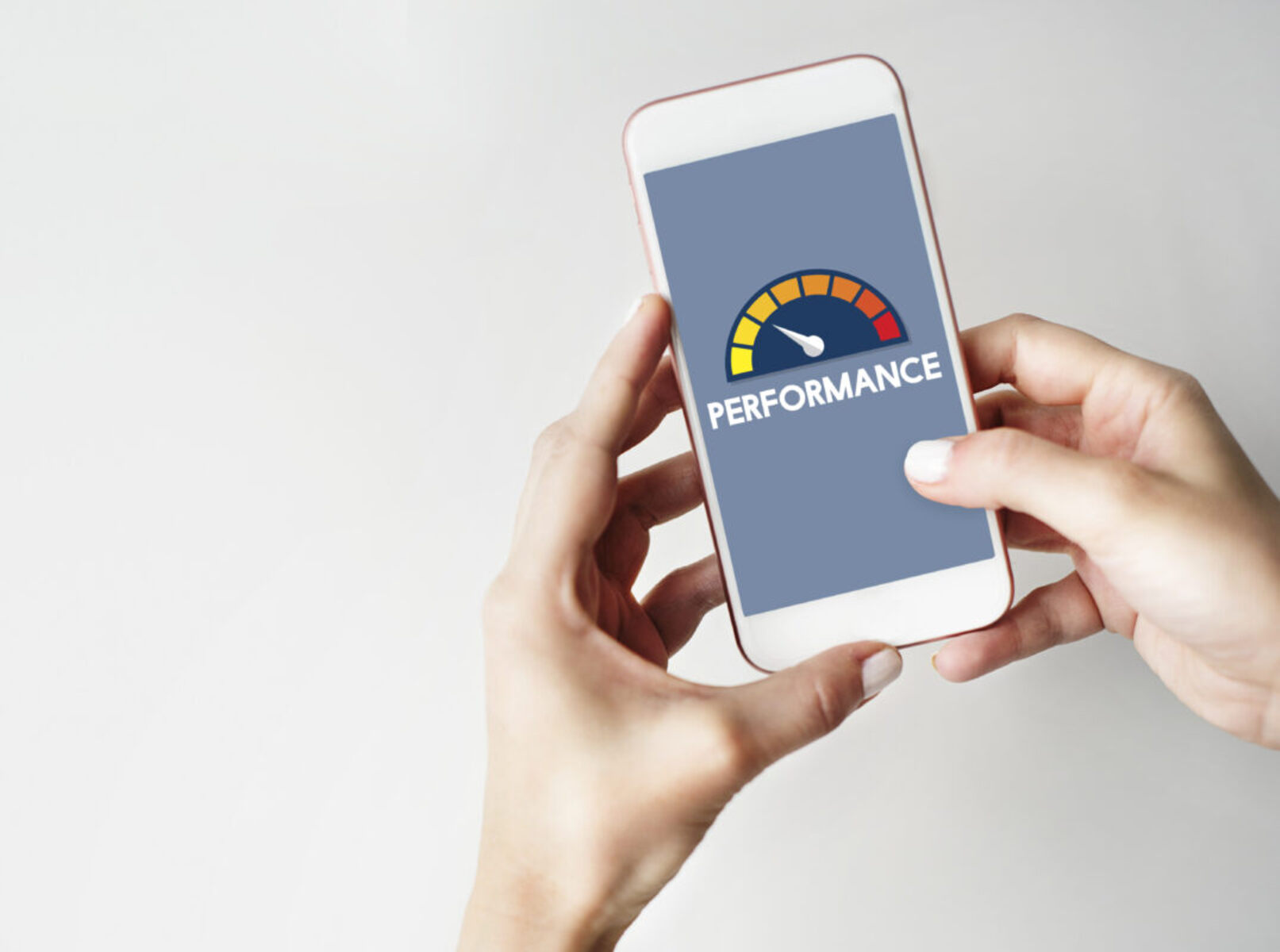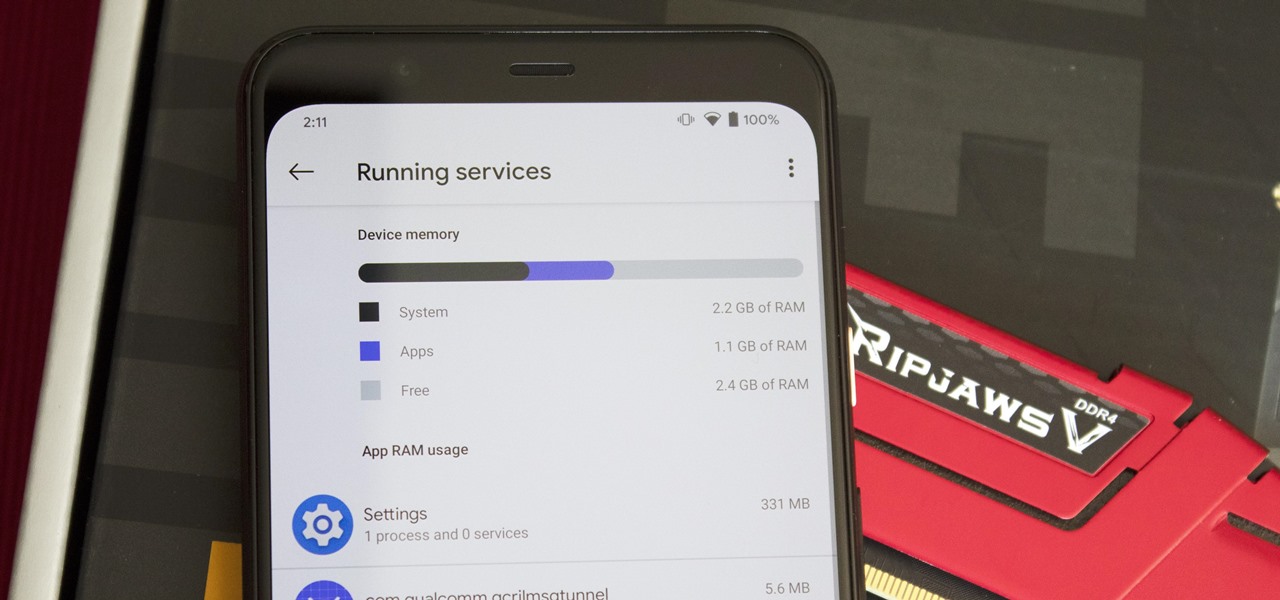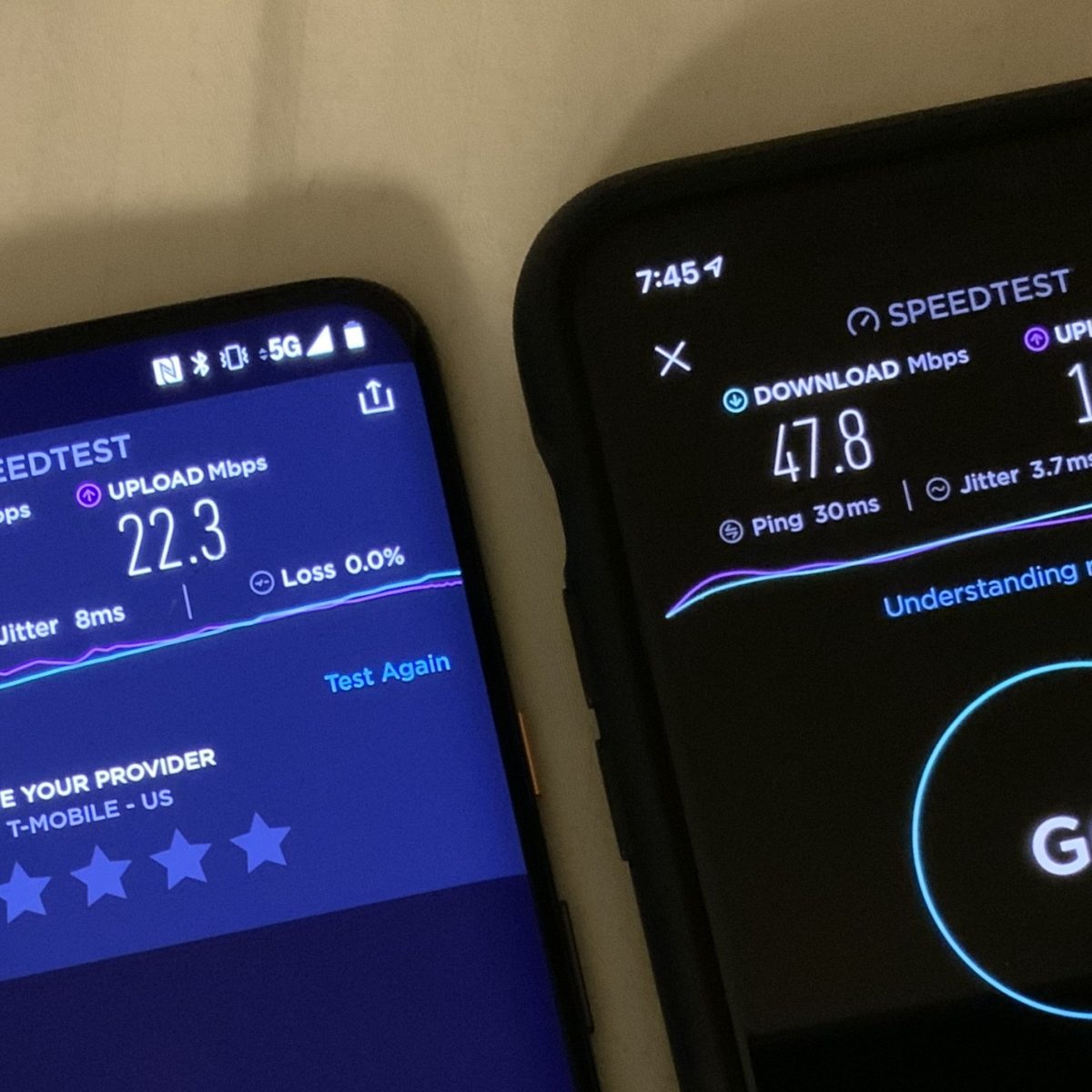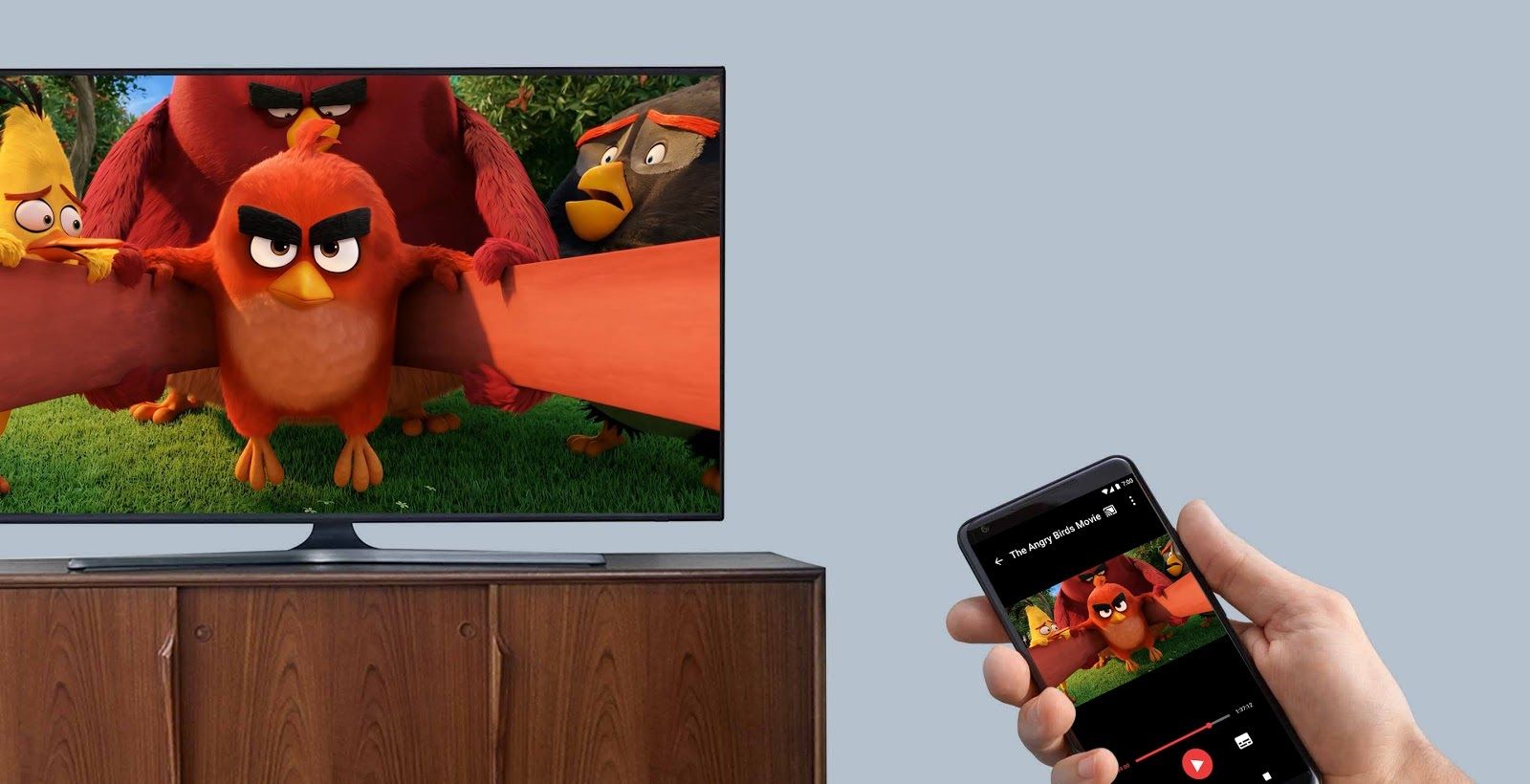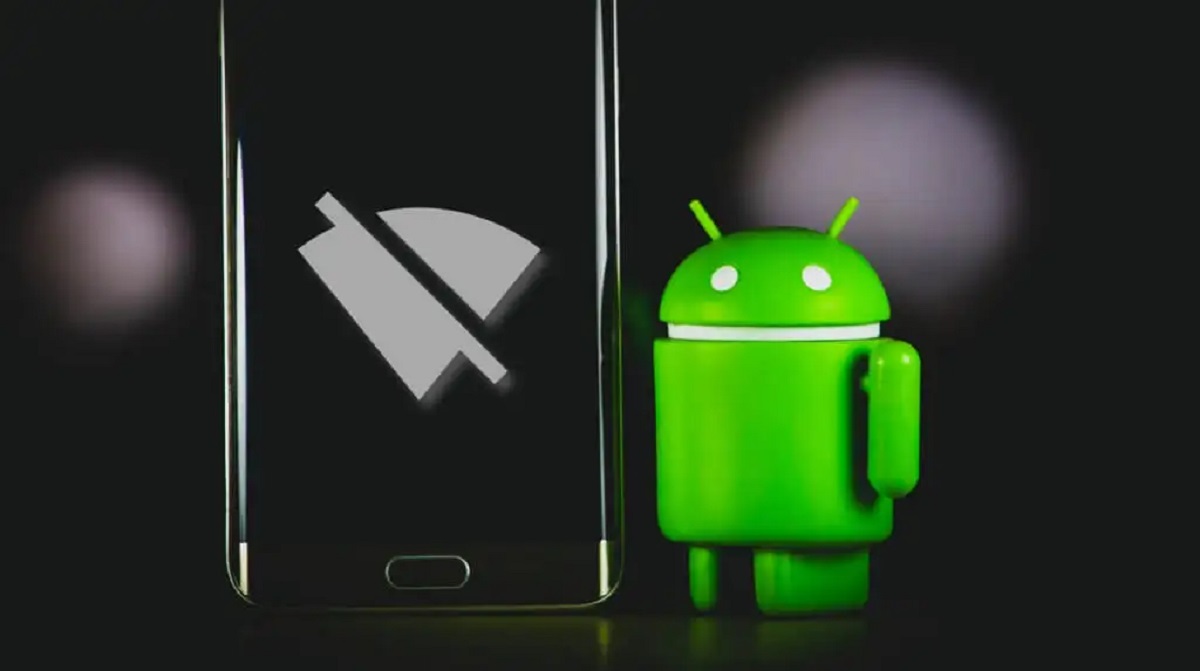Introduction
Welcome to the digital age, where smartphones have become an integral part of our daily lives. These pocket-sized devices allow us to stay connected, informed, and entertained on the go. However, despite their advanced technology, many of us have experienced the frustration of a slow-performing smartphone.
Whether it’s the endless loading screens, lagging apps, or delayed responsiveness, a slow smartphone can be a major annoyance. It not only hampers productivity but also tests our patience. So, what causes our once lightning-fast phones to slow down over time?
In this article, we will explore the common reasons behind sluggish smartphone performance and provide some tips to help you improve the speed and efficiency of your device. Whether you’re an Android enthusiast or an iPhone aficionado, the principles discussed here apply to both platforms.
But first, let’s delve into the background of smartphone performance. Modern smartphones are marvels of engineering, combining powerful processors, ample RAM, and high-resolution displays. These devices are designed to handle multiple tasks simultaneously, providing us with a seamless user experience. However, as we install apps, take photos and videos, and accumulate digital content, our phones tend to accumulate clutter, which can cause performance issues.
It’s essential to understand that smartphones are complex devices, and their performance can be influenced by various factors, including software, hardware, storage capacity, and user habits. By identifying and addressing these underlying factors, you can optimize your smartphone’s performance and enjoy a smooth and speedy experience once again.
Background on Smartphone Performance
In order to understand why smartphones can sometimes become slow and unresponsive, it’s important to have a basic understanding of how they function and what factors contribute to their overall performance.
Smartphones are equipped with powerful processors, similar to those found in computers. These processors allow the phone to handle complex calculations and data processing, ensuring that apps run smoothly and quickly.
Additionally, smartphones have a certain amount of random access memory (RAM), which is used to temporarily store data that the CPU needs for quick access. The more RAM a smartphone has, the more efficiently it can multitask and process information.
Moreover, the operating system (OS) and software applications installed on the smartphone play a significant role in its performance. These programs are designed to interact with the device’s hardware and utilize its resources effectively.
When a smartphone is brand new, it usually performs optimally. However, over time, factors such as software updates, the accumulation of data and files, and the installation of various apps can impact its performance.
As you use your smartphone, it collects data such as cached files, app data, and browsing history. This data can gradually build up and occupy a significant portion of the storage space, leading to decreased performance. Additionally, the more apps you install, the more resources are required to run them, which can strain the device’s hardware.
In some cases, outdated software can also contribute to slower performance. Manufacturers regularly release updates to fix bugs, enhance security, and improve overall performance. Not installing these updates can result in a less efficient and slower device.
Ultimately, the performance of a smartphone is determined by a combination of factors including hardware capabilities, software optimization, and user habits. By understanding these factors, you can effectively troubleshoot and address any performance issues you may encounter.
Common Reasons for Slow Smartphone Performance
While there can be various factors that contribute to slow smartphone performance, some common culprits are frequently encountered. By identifying these reasons, you can take appropriate steps to improve the speed and efficiency of your device. Let’s look at some of the most prevalent causes:
1. Insufficient Storage: One of the primary factors that can slow down your smartphone is the lack of available storage space. As you accumulate photos, videos, apps, and other data, your device’s storage can become full, which leads to decreased performance. Deleting unnecessary files or moving them to cloud storage can free up space and help your smartphone run more smoothly.
2. Too Many Apps Running in the Background: Multitasking is one of the great advantages of smartphones, but having too many apps running simultaneously can drain resources and cause sluggishness. Close apps that you are not actively using from the multitasking menu to free up RAM and improve performance.
3. Outdated Software: Manufacturers regularly release software updates that offer bug fixes, security patches, and performance improvements. Failing to update your smartphone’s operating system and apps can result in slower performance. Make sure to install software updates promptly to optimize your device’s performance.
4. Malware or Virus Infection: Malicious software, such as malware or viruses, can significantly impact your smartphone’s performance. These threats may run in the background, consuming resources and causing slowdowns. It is crucial to have reliable antivirus software installed on your device and periodically scan for any potential threats.
5. Overheating: Overheating can also lead to decreased smartphone performance and potential hardware damage. Excessive usage, playing graphic-intensive games, or running resource-demanding apps for extended periods can cause your device to overheat. Give your phone regular breaks to cool down, avoid using it under direct sunlight, and ensure proper ventilation to prevent overheating.
6. Hardware Issues: Sometimes, smartphone performance issues may stem from hardware problems. This can include issues with the processor, RAM, or other internal components of the device. If you suspect hardware issues are causing the slowdown, it is best to contact the manufacturer or seek professional assistance for diagnosis and repair.
By identifying and addressing these common causes of slow smartphone performance, you can restore your device’s speed and efficiency, ensuring a smoother user experience overall.
Insufficient Storage
One of the most common reasons for a slow-performing smartphone is insufficient storage space. As we use our devices to capture photos and videos, download apps, and store files, the available storage capacity gradually diminishes.
When your smartphone’s storage reaches its maximum capacity, it can have a significant impact on performance. The device needs a certain amount of free space to function optimally, as it uses storage for various tasks such as caching, temporary files, and app data.
If your device is running out of storage, you may experience symptoms such as slower app launches, delayed response times, and overall sluggishness. Fortunately, there are several steps you can take to address this issue:
1. Delete Unnecessary Files: Start by going through your files and deleting anything you no longer need. This includes old photos, videos, documents, and downloaded files that are taking up valuable storage space. Be mindful of duplicates or files that can be backed up to the cloud to free up additional storage.
2. Clear App Cache: Many apps store data in the form of temporary files or cache, which can accumulate over time and consume a significant amount of storage. You can manually clear the cache for individual apps or use the built-in storage or cache cleaner feature on your phone to remove unnecessary data.
3. Move Files to External Storage: Some smartphones support expandable storage through a microSD card. If your device has this option, consider transferring files such as photos, videos, and music to the external storage to free up space on the internal memory.
4. Utilize Cloud Storage: Cloud storage services like Google Drive, Dropbox, or iCloud provide a convenient way to store your files remotely. By uploading files and media to the cloud, you can access them whenever needed, while freeing up storage space on your smartphone.
5. Uninstall Unused Apps: Many users tend to accumulate a large number of apps on their smartphones, but not all of them are necessary or actively used. Take some time to review your app list and uninstall any apps that you no longer need or haven’t used in a while. This will not only free up storage space but also improve device performance by reducing background processes.
By managing your smartphone’s storage efficiently, you can alleviate the strain on your device’s resources and enhance its overall performance. Regularly cleaning up and organizing your files will ensure that you have enough space to run apps smoothly, store new content, and enjoy a faster smartphone experience.
Too Many Apps Running in the Background
One of the reasons your smartphone may be running slower than usual is the presence of too many apps running in the background. While multitasking is a convenient feature, having numerous apps actively running can consume valuable system resources such as RAM and CPU power. This can result in decreased performance and slower responsiveness.
Here are some factors that contribute to excessive background app usage:
- Automatic Updates: Many apps are set to automatically update in the background, consuming resources and causing performance issues. Review your app settings to disable automatic updates or change the frequency to a time when you are not actively using your device.
- Push Notifications: Apps that send regular push notifications can also contribute to background activity. These notifications require the app to stay active in the background, using up system resources. Consider adjusting your notification settings to reduce the number of unnecessary notifications.
- Location-Based Services: Apps that use location-based services, such as mapping or ride-hailing apps, often run in the background to provide real-time updates. While these services can be useful, they can also impact performance. Disable location services for apps that don’t require constant access to your location.
- Social Media Apps: Social media apps are notorious for running in the background and consuming resources even when not actively in use. These apps often refresh content, update feeds, and receive notifications in the background, which can slow down your device. Consider limiting the number of social media apps installed or adjusting the notification and background refresh settings within the apps.
To address the issue of too many apps running in the background:
- Force Close Unused Apps: Navigate to the multitasking view on your smartphone and close any apps that are running in the background but are not actively being used. This will free up system resources and help improve performance.
- Disable Background App Refresh: In your device settings, look for the option to disable background app refresh for specific apps. This will prevent them from updating content or refreshing data in the background.
- Manage App Permissions: Review the permissions granted to each app on your device. Some apps may have unnecessary permissions enabled, allowing them to run in the background without your knowledge. Disable unnecessary permissions to limit background app activity.
By managing the number of apps running in the background and adjusting their settings, you can ensure that system resources are being utilized efficiently. This will help improve performance, reduce battery consumption, and result in a smoother and more responsive smartphone experience.
Outdated Software
Another common reason for a slow-performing smartphone is outdated software. Smartphone manufacturers and app developers regularly release software updates to improve performance, fix bugs, enhance security, and introduce new features.
When you neglect to install these updates, your device may not be running on the latest version of its operating system or have the most recent versions of apps installed. This can lead to compatibility issues, decreased performance, and vulnerability to security risks.
Here are a few reasons why outdated software can slow down your smartphone:
- Bug Fixes and Performance Improvements: Software updates often include bug fixes and optimizations that address known issues and improve overall performance. By skipping these updates, you may be missing out on crucial improvements that can enhance your device’s speed and responsiveness.
- Security Vulnerabilities: Outdated software can expose your smartphone to security vulnerabilities and make it more susceptible to malware and hacking attempts. Manufacturers and developers regularly release security updates to patch vulnerabilities and protect against emerging threats. Keeping your software up to date ensures that your device is protected from potential risks.
- App Compatibility: As app developers release new versions of their applications, they may no longer support older versions of the operating system. This can lead to compatibility issues and result in apps not functioning properly or consuming more resources than necessary.
To ensure your smartphone operates at its best, it is important to keep your device’s software up to date. Here’s what you can do:
- Enable Automatic Updates: Most smartphones allow you to configure automatic software updates. This feature ensures that your device stays up to date without requiring manual intervention. Check your device settings to enable automatic updates for both the operating system and installed apps.
- Manually Check for Updates: If you prefer to control when updates are installed, you can manually check for software updates. Go to your device settings and look for the “Software Update” or “System Update” option. Follow the prompts to check for and install any available updates.
- Update Apps: In addition to updating the operating system, it is important to keep your apps up to date as well. Visit the app store on your device, go to the “Updates” section, and update any installed apps that have pending updates.
By regularly updating your smartphone’s software, you ensure that you have the latest features, bug fixes, performance enhancements, and security patches. This will help keep your device running smoothly, optimize its performance, and protect it from potential risks.
Malware or Virus Infection
One of the most concerning reasons for slow smartphone performance is the presence of malware or virus infection. Malicious software can significantly impact your device’s performance, leading to slower response times, increased battery drain, and unexpected behavior.
Here are some ways malware or virus infection can affect your smartphone’s performance:
- Resource Consumption: Malware or viruses running in the background can consume a significant amount of system resources such as CPU power, RAM, and network bandwidth. This can result in slower overall performance, including longer app load times and increased system lag.
- Spam and Adware: Malware or viruses can bombard your device with spammy ads, pop-ups, or unwanted notifications. These intrusive elements not only impede your user experience but can also slow down your device by taking up valuable processing power and internet bandwidth.
- Data Theft and Privacy Breaches: Some malware or viruses are designed to collect your personal information, such as login credentials or financial data. These security breaches can compromise your privacy and may lead to identity theft. In the background, the malware may communicate with malicious servers, further draining your device’s resources.
Preventing or addressing malware and virus infections on your smartphone is crucial for maintaining optimal performance and protecting your personal information. Here are some steps you can take:
- Install a Reliable Antivirus Software: Look for a reputable antivirus app on your device’s app store and install it. Regularly update the antivirus software and perform full scans of your device to detect and remove any malware or viruses that may be present.
- Exercise Caution When Installing Apps: Be cautious when downloading and installing apps from unofficial sources. Stick to trusted app stores and read user reviews before installing any new apps. Malware often disguises itself as legitimate software.
- Keep Your Device’s Operating System and Apps Updated: As mentioned earlier, keeping your smartphone’s software up to date is an essential step in protecting against security vulnerabilities. Updates often include security patches that address known issues and protect against the latest threats.
- Be Wary of Suspicious Links and Phishing Attempts: Avoid clicking on links from unsolicited messages or emails, as they could lead to malware installation or phishing attempts to trick you into revealing sensitive information. Be vigilant and only click on links from trusted sources.
By taking these precautions and regularly scanning your device for malware or viruses, you can safeguard your smartphone’s performance, protect your personal information, and ensure a smooth and secure user experience.
Overheating
Another factor that can contribute to slow smartphone performance is overheating. Smartphones are mini-computers packed with powerful processors, graphic cards, and batteries. As a result, they generate heat during regular usage, especially when performing resource-intensive tasks such as gaming, video streaming, or using augmented reality applications.
When your smartphone overheats, it can have a detrimental impact on performance and even lead to potential hardware damage. Here are a few ways in which overheating can affect your device:
- Throttling: To prevent damage, smartphones have built-in safeguards that throttle down the performance when the device gets too hot. This throttling reduces processing power and can result in slower performance and laggy user experience.
- Battery Drain: Overheating can cause excessive battery drain. When the device temperature rises, it puts strain on the battery, causing it to discharge faster. This can lead to shorter battery life and the need to charge your device more frequently.
- Automatic Shutdowns: In extreme cases, smartphones may automatically shut down to protect themselves from overheating. This can be frustrating if it happens during important tasks or while using resource-intensive applications.
To mitigate the issue of overheating, here are some tips you can follow:
- Take Breaks and Avoid Intensive Usage: If you notice your smartphone becoming noticeably hot during intensive tasks, such as gaming or video streaming, try taking breaks in between sessions to give your device a chance to cool down. Avoid using your smartphone under direct sunlight, as it can contribute to overheating.
- Close Unused Apps and Background Processes: Running multiple apps and processes simultaneously can increase the load on your device’s processors, leading to increased heat generation. Close any unnecessary apps and background processes to reduce the strain on your device.
- Avoid Using Resource-Intensive Apps: Certain apps, such as those with graphic-intensive games or augmented reality features, can put a significant strain on your device’s components. If possible, limit the usage of these apps or use them in moderation to prevent overheating.
- Remove Phone Case: Some phone cases can trap heat, hindering the dissipation of heat from your device. Consider removing your phone case, especially during intensive usage, to allow for better heat dissipation.
- Keep Your Device Ventilated: Ensure that your device has adequate airflow to prevent overheating. Avoid covering the device with fabric or placing it on surfaces that can block the airflow, such as pillows or blankets.
By following these tips, you can minimize the risk of overheating and help maintain optimal performance on your smartphone. Remember that excessive and prolonged overheating can cause long-term damage to your device’s components, so it’s important to address the issue promptly and take necessary precautions.
Hardware Issues
While software-related issues are often the main cause of slow smartphone performance, it is essential to consider the possibility of hardware-related problems. Over time, wear and tear or manufacturing defects can lead to various hardware issues that can impact the overall performance of your device.
Here are some common hardware issues that may result in a slow-performing smartphone:
- Overloaded or Failing Processor: The processor is the brain of your smartphone, responsible for executing commands and handling tasks. If the processor is overloaded or failing, it can cause slow performance, lag, and overall unresponsiveness.
- Insufficient RAM: Random Access Memory (RAM) is used as temporary storage for active processes and data. If your device has insufficient RAM, it may struggle to keep up with the demands of running multiple applications simultaneously, resulting in slower performance.
- Deteriorating Battery Capacity: As smartphones age, the battery capacity can deteriorate, leading to decreased performance. A weak battery may not be able to supply enough power to support the device’s operations, causing slower performance and unexpected shutdowns.
- Storage Degradation: The internal storage of your smartphone, typically in the form of flash memory, can degrade over time. As the storage degrades, read and write speeds may be significantly reduced, resulting in slower app launches, file transfers, and overall performance.
- Hardware Connectivity Issues: Each smartphone component requires proper connectivity and communication to function optimally. Loose connections or faulty components can hinder performance and result in unpredictable behavior.
If you suspect that hardware issues are causing your smartphone’s slow performance, it is advisable to seek professional assistance. A certified technician can diagnose the specific problem and provide appropriate solutions, such as repairing or replacing the faulty component.
If your device is still under warranty, contact the manufacturer or authorized service centers for assistance. They can guide you through the necessary steps, including repairs or hardware replacement.
It’s important to note that hardware issues are more challenging to fix compared to software-related problems. In some cases, fixing hardware issues may require replacing the entire device or costly repairs. Therefore, it’s crucial to take proper care of your smartphone, handle it with care, and avoid exposing it to extreme temperatures or physical damage.
By addressing hardware issues promptly and seeking professional help when needed, you can ensure that your smartphone’s performance is optimized, allowing you to enjoy a smooth and efficient user experience.
Tips for Improving Smartphone Performance
If you’re experiencing slow performance on your smartphone, there are several steps you can take to optimize its speed and efficiency. By implementing these tips, you can enhance the overall performance of your device:
- Clear App Cache: Regularly clear the cache of your apps to free up storage space and remove temporary files that can hinder performance. You can do this individually for each app or use the storage or cache cleaner feature available on your device.
- Limit Background App Activity: Close unnecessary apps running in the background to free up system resources. This will help reduce battery consumption and improve overall performance.
- Manage App Notifications: Review the notifications you receive on your device and disable notifications from apps that are not essential. This reduces the number of app processes running in the background and increases performance.
- Optimize Display Settings: Adjust your device’s display settings to optimize battery life and performance. Lowering the brightness level and reducing the screen timeout duration can help improve overall performance and extend battery life.
- Remove Unnecessary Widgets and Live Wallpapers: Widgets and live wallpapers can consume processing power and drain battery life. Remove any widgets that are not essential and switch to a static wallpaper to reduce resource usage.
- Update Apps Regularly: Keep your apps up to date by installing the latest versions available. App updates often include bug fixes, performance improvements, and new features that can enhance overall performance.
- Optimize Storage: Regularly review your device’s storage and remove unnecessary files and apps. Deleting unwanted photos, videos, and unused apps can free up valuable storage space and help improve performance.
- Restart Your Device: Restarting your smartphone periodically helps refresh the system and clear any temporary glitches or processes that may be impacting performance.
- Consider a Factory Reset: If all else fails and your device is still experiencing significant performance issues, you may consider performing a factory reset. This will wipe your device and restore it to its original factory settings, removing any potential software-related issues.
Implementing these tips can help optimize your smartphone’s performance, improve responsiveness, and enhance the overall user experience. However, it is important to note that different devices and operating systems may have specific settings and features. Consult your device’s user manual or online resources for more personalized tips and guidance.
Regular maintenance and adopting good smartphone usage habits, such as clearing cache regularly and managing storage, will go a long way in ensuring that your device continues to perform at its best.
Conclusion
Smartphones have become an integral part of our lives, providing us with a wealth of functionality and convenience. However, like any technology, they can experience performance issues over time. Understanding the common reasons behind slow smartphone performance and implementing the necessary steps can greatly improve your device’s speed and efficiency.
We explored various factors that can contribute to a slow-performing smartphone, including insufficient storage, too many apps running in the background, outdated software, malware or virus infection, overheating, and hardware issues. By identifying and addressing these underlying factors, you can optimize your device’s performance and enjoy a smoother user experience.
We provided actionable tips for improving smartphone performance, such as clearing app cache, managing background apps, updating software, protecting against malware, addressing overheating, and considering hardware-related issues. By implementing these tips, you can improve your device’s speed, responsiveness, and overall performance.
Remember that proactive maintenance, regular updates, and responsible usage habits are crucial in keeping your device running smoothly. By taking care of your smartphone and addressing performance issues promptly, you can extend its lifespan and enjoy its full potential.
It’s essential to note that while these tips can significantly improve performance, there may be instances where hardware issues require professional assistance. If you have covered all the recommended steps and your device still experiences slow performance, consider reaching out to the manufacturer or a qualified technician for further diagnosis and solutions.
Ultimately, by understanding the various factors affecting smartphone performance and implementing the necessary strategies, you can optimize your device’s speed, efficiency, and overall user experience. Take the initiative to improve your smartphone’s performance today and enjoy the benefits of a fast and responsive device.







